Petit Le Mans just wrapped up at Road Atlanta signaling the end of factory-backed front-engine Corvette race cars. To ease the pain of losing a national icon, Chevrolet did an official reveal of the new mid-engine C8.R that will take its place. The biggest news from the event came when Chevrolet confirmed some important details about the C8.Rs endlessly speculated upon powerplant.
It turns out that the impossibly fast revs and delightful howls that we’ve been hearing in sneak-peak videos have been brought to your ears by an all-new, Naturally Aspirated 5.5L V8. For the first time since one of our favorite Corvettes, the C4 ZR-1, left production in 1995, this new mill features Dual Overhead Cams and, for the first time ever in a General Motors V8, a Ferrari-esque Flat-Plane Crankshaft.
The most tantalizing bit part of all of this comes from an unlikely source: FIA LM GTE homologation rules. They state the new powerplant MUST be derived from a series production engine with more than 300 units being fitted to a street vehicle from the same manufacturer. This statute has led us to a clearer picture of the future performance variants of the mid-engine Corvette. Here we will attempt to explain our thoughts on the most probable arrangement for the upcoming Z06’s C8.R-based engine (for the sake of simplicity, we are assuming the first performance model fitted with such a motor will be named Z06 but in a time of DOHC, mid-engine Corvettes, anything is possible).
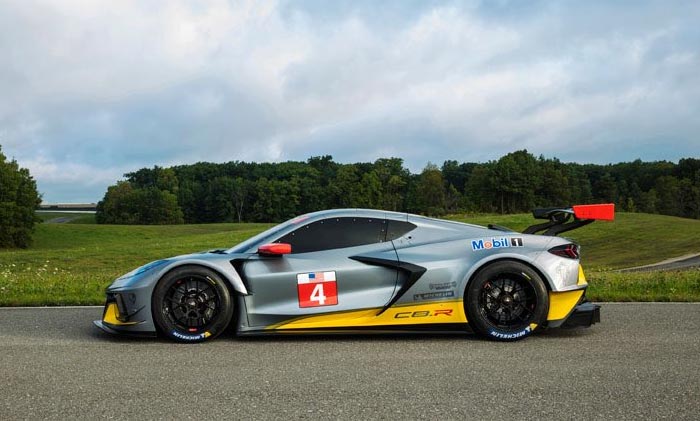
What do DOHC and FPC actually mean and how do they differ from the Small-Block V8 that we have cherished since 1955?
We will start with the slightly more familiar Dual Overhead Camshaft piece of the new engine equation.
Fancy Answer: A traditional Chevrolet V8 uses a camshaft located inside the engine block. This camshaft actuates long rods that go up through the block into the head where they move (push) the rockers/valves. A DOHC setup, on the other hand, places two camshafts per cylinder bank (four total in a V8) within the cylinder heads, one operates the intake valves and the other one takes care of the exhaust valves. This allows for less-restricted airflow, purges the inertia caused by the pushrods, and most importantly allows the engine to rev higher! If you are looking for a surprisingly entertaining, more in-depth article on this, check out Jason Torchinsky’s explanation on Jalopnik. You may be also be asking yourself why GM has stuck with pushrods for so long if DOHC is so great? Road & Track’s Chris Perkins has you covered on that one as well.
Layman’s Version: Dual Overhead Cams let your engine rev higher which adds excitement to the driving experience!
Next, lets tackle that Flat Plane Crankshaft
Technical information: The crank is a lobed shaft that connects to (and is rotated by) the pistons. Basically, it is where the engine’s “spinning” power meets up and starts to head out to the rest of the vehicle. In Chevrolet’s usual cross-plane design, the pistons are connected at 90-degree increments (right angles), meaning every time a cylinder fires, the crankshaft rotates 90°. In a flat-plane crank, the crank features 180° piston connecting points. FPCs are naturally more balanced and don’t require the use of counterweights like their CPC equivalents. The result is a more compact size, reduced rotational mass, and a lower point of inertia.
FPCs for non-nerds: A flat crankshaft is lighter and better balanced than a regular cross-plane crank which lets it rev higher and faster. If you can stomach a video that prominently features two Mustangs, Jason Cammisa put together a great video explaining some differences between FPCs and CPCs with his drummer friend a few years ago. Just make it through the first four minutes if you can over on MotorTrend.com.
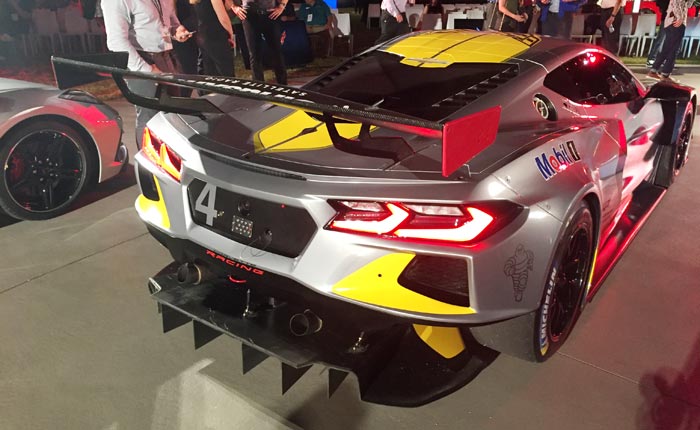
A Naturally Aspirated 5.5L DOHC V8 with a Flat-Plane Crank is the way to go!
If you asked 20 people who review vehicles for a living which car that they have driven in the past five years was the best; answers are sure to be all over the place but one name almost guaranteed to surface multiple times is the Ferrari 458 Speciale. It was the last of Ferrari’s mid-engine V8 cars to abstain from using turbos and by all accounts, it is absolutely sublime to drive. The essential specs for this masterpiece are as follows: 4.5L V8, 597 HP, 9,000 RPM, 3,200ish pounds. If GM could provide something similar (most likely with higher power coming from their extra liter of displacement to offset the C8’s weight disadvantage) at an attainable to semi-attainable price, we could be looking at an all-time great sports/supercar; one that has the opportunity to be THE version that Corvette and driving enthusiasts are after for decades to come (see air-cooled 911s and the previously mentioned Ferrari 458)! Many things have led us to believe this is the direction Chevrolet will take the C8 Z06.
- The most direct way for Chevrolet to follow the homologation rule is to simply throw a version of the NA 5.5L V8 under the hood of a streetable Corvette.
- Corvette Chief Engineer Tadge Juecter had some intriguing talking points at the C8’s official unveiling in July and in the days that followed that seem like good omens for fans of free-breathing, high-revving engines. At the reveal, Tadge was adamant that the Corvette team was committed to Natural Aspiration; touting the C8s unique place in the current mid-engine sports/supercar market multiple times. He also mentioned the “base” version of the 458 Speciale as one of the cars they have benchmarked throughout the development process even calling it “the best sports car ever created.”
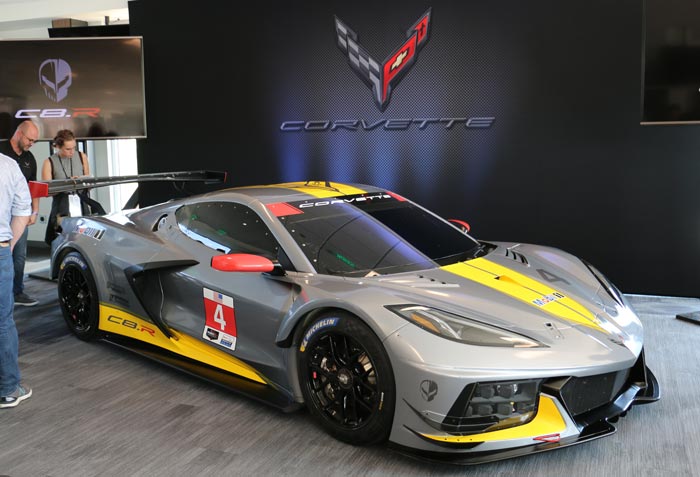
Why we believe a 5.5L DOHC FPC setup will find its way into the Z06 and will be awesome.
- On top of the fast and high revs afforded by the cam and crank design that we discussed earlier, Natural Aspiration provides the other ingredients needed for the ultimate in engaging, characterful sports car engines; liner power delivery, instant throttle response, and perhaps best of all, pure, unmuffled engine noises!
- It also makes sense from a positioning standpoint. Some other speculation (led by the leaked CAD drawings and supposed engine line-ups) have the Z06 going with a Twin-Turbo version of the 5.5L motor (apparently named LT7) making over 800 horses. We think this setup is happening but will have to wait until the ZR1 debuts in a few years. Taking the Stingray and packing in the neighborhood of 100-150 more horses for the Z06 makes more sense (and arguably creates the better car). Going straight to an 800 HP Twin Turbo model leaves a large portion of the market untapped.
- With increasingly stringent emissions and fuel-economy regulations worldwide, this may very well be our last chance at a phenomenal NA engine; the European exotics have all gone to smaller displacement and turbos, adding speed and power at the expense of personality; it is likely only a matter of time until US manufacturers are forced follow suit more than they already are with cars like the Ford GT. We really don’t think the current Corvette team is going to let this opportunity pass them by, they have been wanting to create a follow-up to their legendary LS7 since it left their products in 2013! With the surprise reveal of the C8.R, we may get to see this animal of a Z06 sooner than expected!
Possible Cons:
- This is the General’s first foray into Flat-Plane territory and it could literally be a bumpy ride! FPCs don’t rev as smoothly as we are accustomed to which causes a good amount of vibration, especially at low revs.
- The wider (180° vs 90°) angle between firing cylinders reduces low-end torque which has long been a staple of Corvettes. GM’s deep pockets, engineering might, and large (for a flat-plane V8) displacement should help mitigate this issue (the C8.R is only 20 lb./ft. of torque behind its HP number which is pretty dang impressive!).
- That displacement has also led to some doubts. The biggest V8 Ferrari has ever fitted with an FPC was 4.5L and Ford’s “Voodoo” engine displaces 5.2L. GM is working with 5.5L which has never been done in a street car before.
In the end, even with the challenges they are facing, we don’t think Tadge and Co. will allow the boys from Dearborn to have all of the glorious NA FPC fun and in spite of the challenges ahead of the team, we believe they are going to deliver a 9,000 RPM screamer of a Z06 before making way for an all-powerful Twin-Turbo ZR1.
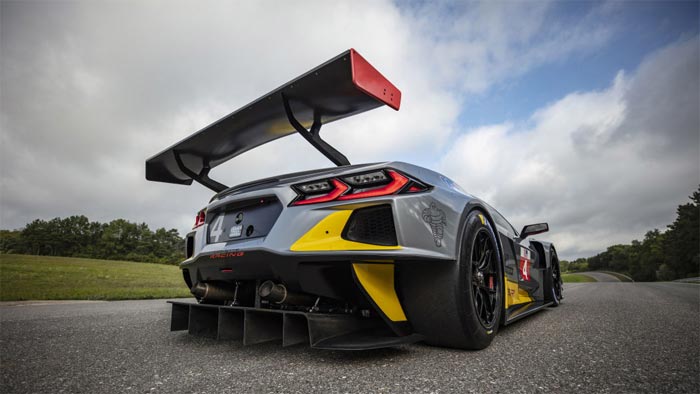
Related:
[VIDEO] Corvette Racing’s C8.R Revs Mystery Engine During Reveal
[VIDEO] The Corvette C8.R is Introduced at Petit Le Mans
[VIDEO] On-Board Camera Captures the Corvette C8.Rs Hot Lap at Road Atlanta
-

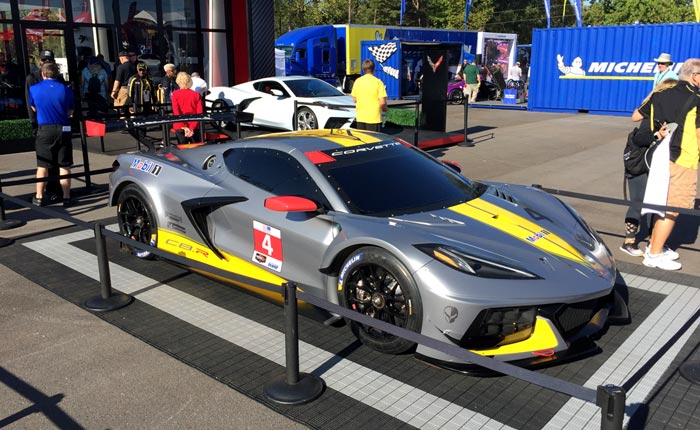
![[SPIED] Corvette ZR1 Mules Testing in Ohio Ahead of the NCM Bash [SPIED] Corvette ZR1 Mules Testing in Ohio Ahead of the NCM Bash](https://www.corvetteblogger.com/images/content/uploads/2024/04/042224_8-218x150.jpg)

![[VIDEO] Chevrolet Was Prepared to Build the C7 and C8 Corvette Simultaneously [VIDEO] Chevrolet Was Prepared to Build the C7 and C8 Corvette Simultaneously](https://www.corvetteblogger.com/images/content/uploads/2024/04/042224_7-218x150.jpg)
Alex this is one of the most informing and well written stories I have seen on corvette blogger website. Thanks very much job well done sir.
Thank you, Earl! That means a lot!
All of this high RPM excitement reminds me of a friend upon returning from Vietnam in 1969 going to our local Chevy dealer and purchasing a new silver, black striped Z28. The first drive that he took me on, he had to show me what it was like to ride in a car at 8000 RPM. Before he left for the Army, he had a 59′ Corvette with a small block that was previously in a C/Gasser dragster, including the 13:1 pistons. He kept a spare set of plugs in the glove box so that they could be changed before any serious street race took place. Unfortunately for the 59′, he let a co-worker drive the car, was involved in an accident and the Corvette went up in flames except for the trunk lid. I can’t remember what happened to the 69′ Z-28. I hope owner #2 treated it with a little more kindness.
Just an FYI, Mercury Marine has continued to produce a DOHC GM LS7 based 90º engine for some time;
750 HP, 8,000 Red Line.
Mercury Marine offers this engine for sale to the public, makes a great resto-mod motor, albeit, it’s expensive.
GM engine guys know all about this engine.
Check it out.
https://www.mercuryracing.com/automotive/
Pretty healthy bore and stroke. While the specs don’t provide torque output, I calculate peak to be right around 500 Lbs/Ft. Being 90º, presumably still provides the low end torque we all like.
The caveat, it’s heavy at 560 lbs.
If the 5.5l of displacement proves difficult to tame from a NVH standpoint in a streetcar, then maybe we see a slightly lower displacement version of the DOHC FPC 5.5l with an electric motor up front to provide torque and extra umph. Recent mules have been seen with plugs hanging out of the frunk and brake by wire systems in the C8 have to be there for hybrid setups as they are less than ideal for performance cars (lousy brake pedal feel and difficult to modulate). Adding electric motors to the front also helps the pretty extreme weight distribution the C8 has (although it won’t help curb weight!)
Either way it will be fun to see how this plays out.
Comments are closed.